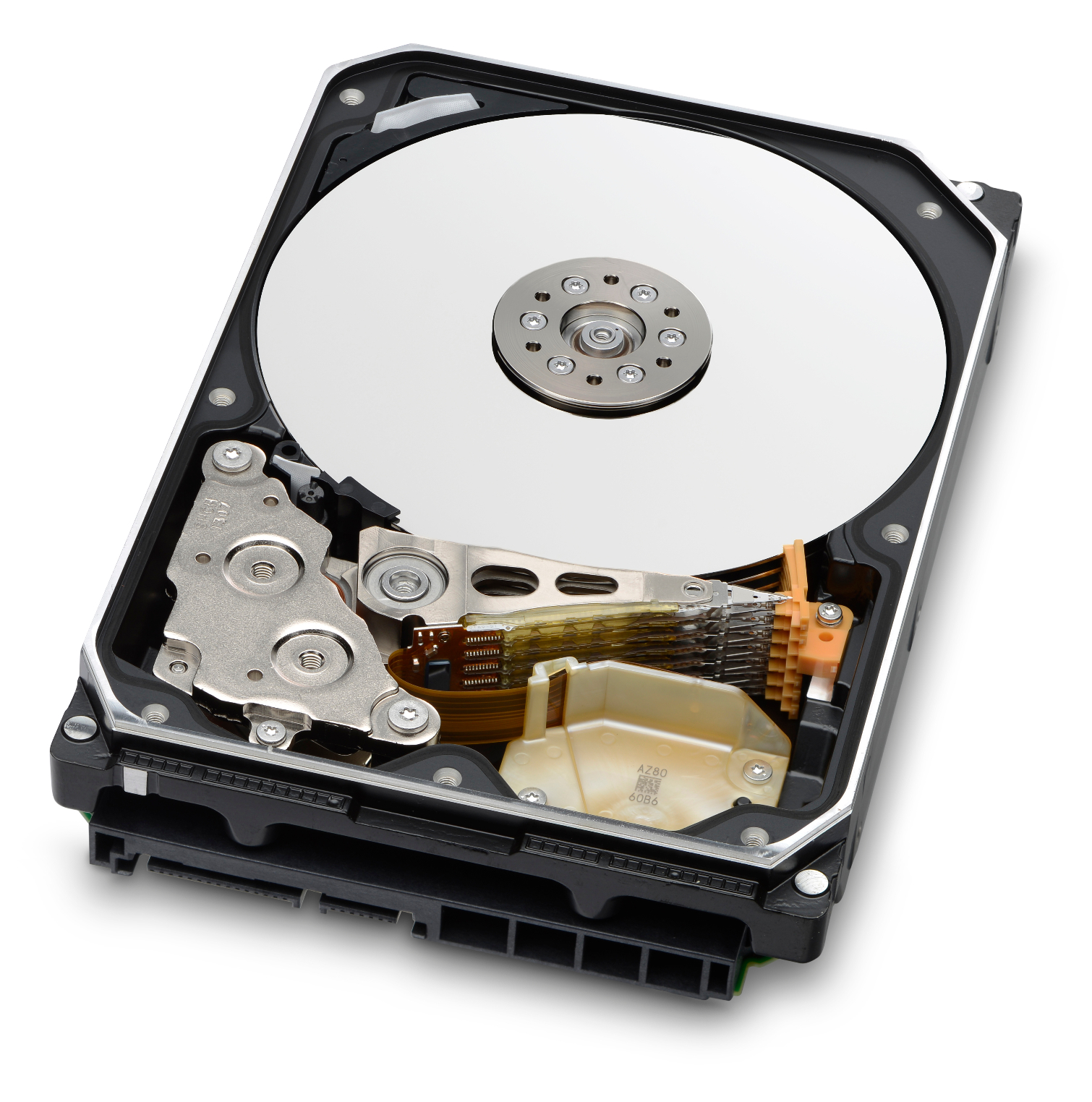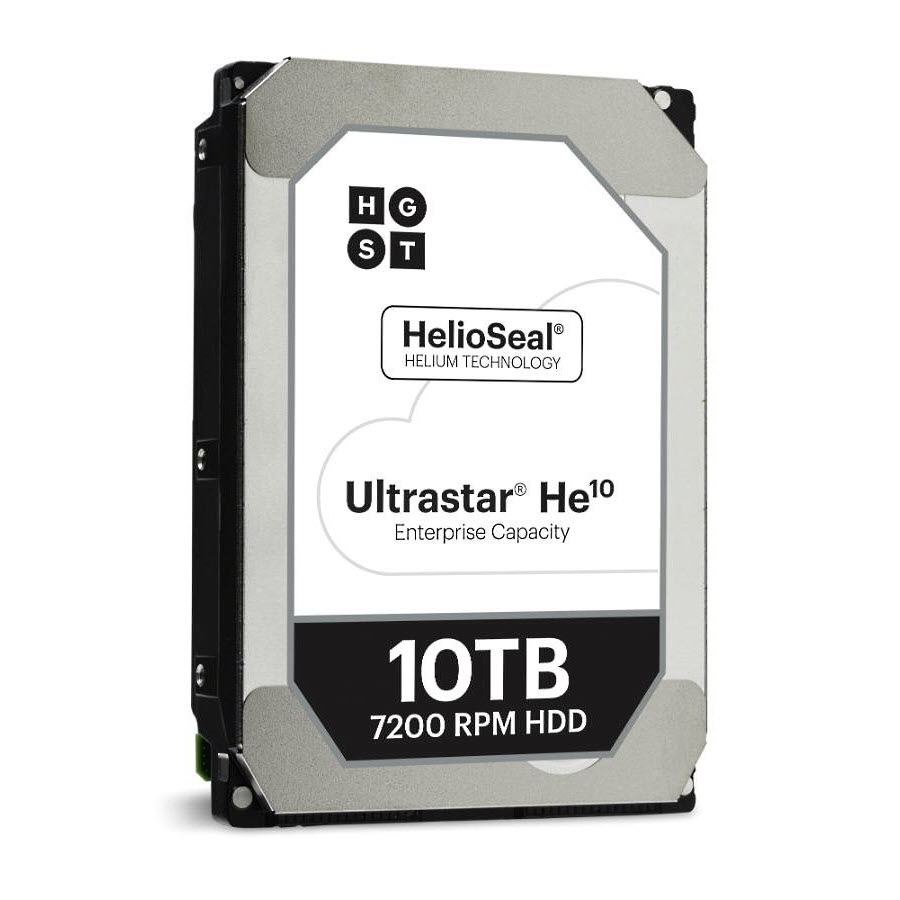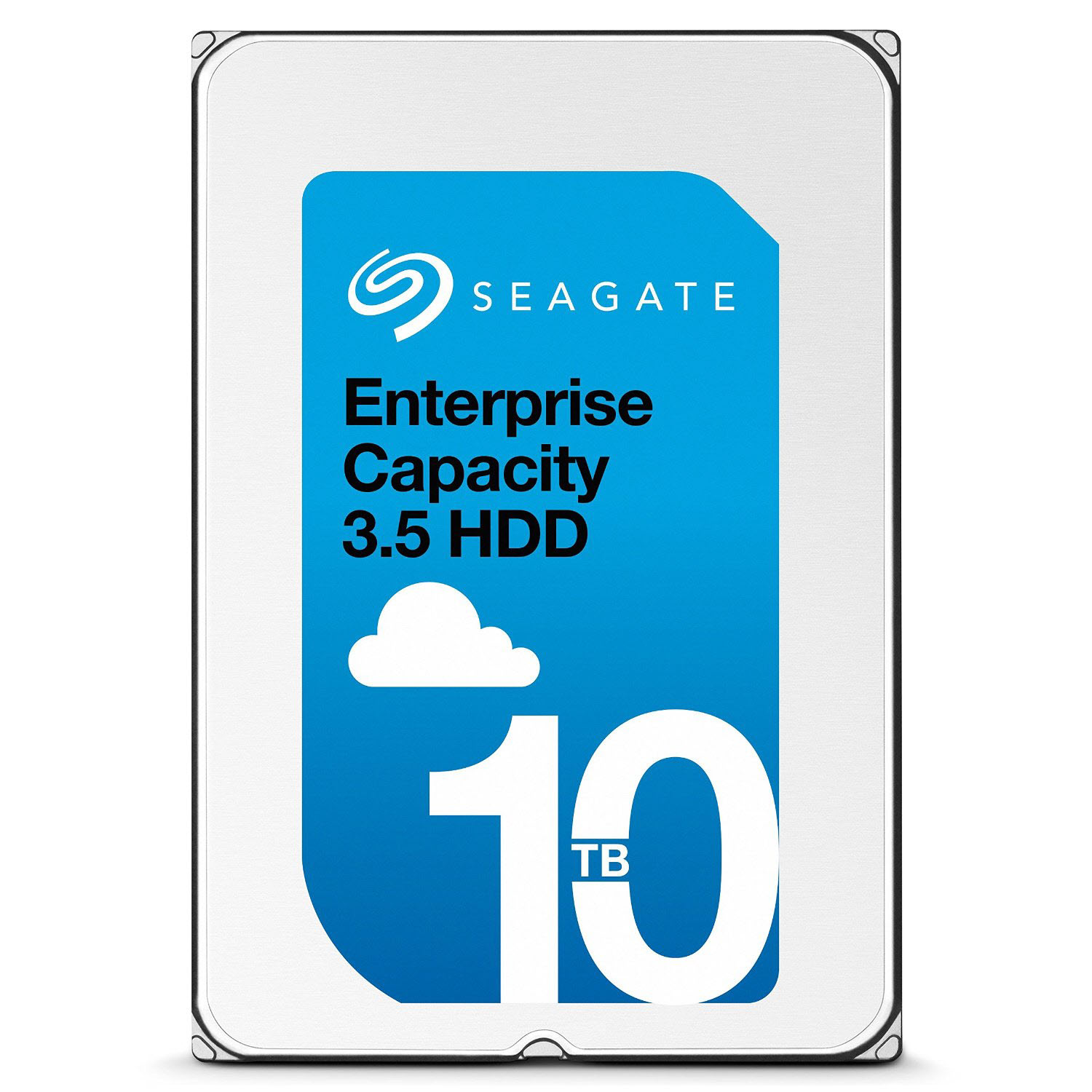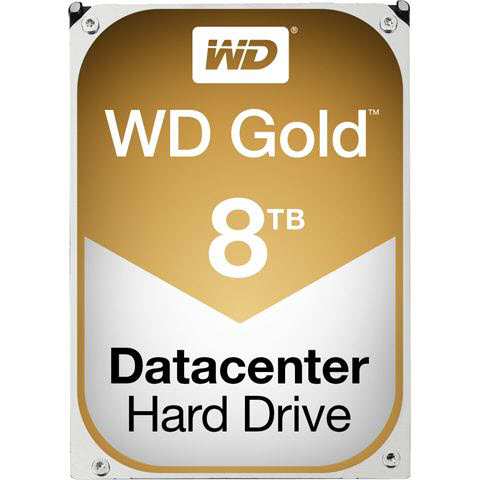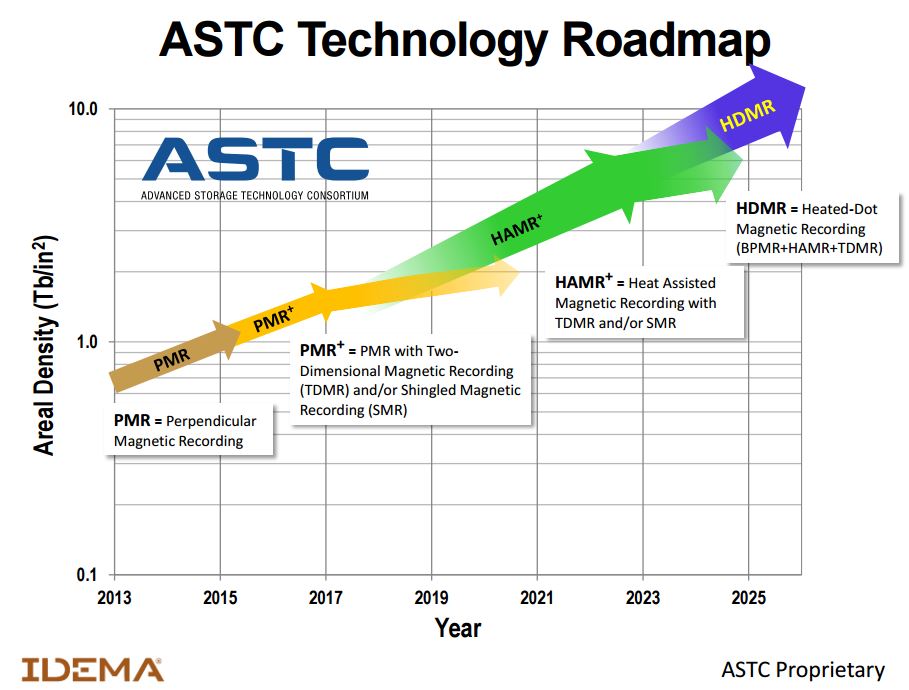Big HDD Showdown: Seagate 10TB vs. HGST Ultrastar He10 vs. WD Gold 8TB
To Helium And Beyond
Why you can trust Tom's Hardware
HGST, a WD subsidiary, was the first to make the helium HDD breakthrough when it began shipping its 6TB Ultrastar He6 drives to select partners in 2013. Helium HDDs commanded a significant price premium at first, but the technology quickly gained widespread acceptance, thus lowering cost. HGST made a steady cadence of improvements to its platform as it moved forward with its 8TB Ultrastar He8 drives, which dominated our Best Of Enterprise HDDs rankings for well over a year, and now its He10 Ultrastar 10TB HDDs look to expand the winning streak.
Seagate may be late to the helium scene, but its entrance is a promising 10TB design that the company is quickly bringing to the desktop PC market.
The MOFCOM Chinese regulatory agency delayed the full integration of WD and HGST for several years, so WD has been on the sidelines of helium development while its own subsidiary led the market. The agency recently relaxed the restrictions and is allowing WD to use HGST's technology in its products, and WD summarily launched its inaugural helium product. The 8TB WD Gold leverages the best of HGST's helium technology, but is clearly just an intermediary step as WD gears up its helium production lines; in fact, the company recently announced a 10TB series.
Both the Seagate and WD/HGST HDDs in our test pool employ groundbreaking caching implementations that offer an incredible organic performance boost for random data, but the companies take divergent paths to deliver somewhat similar results.
SSDs Are Hot, But Still Costly
The challenge to store ever-increasing amounts of data extends from traditional on-premise enterprise applications to the hyperscale data centers that power the cloud. The influx of data is never ending, but the amount of money dedicated to the solution remains flat. In other words, we have to find ways to store more data with the same amount of money, and the best way to do that is through increased density, which reduces cost from several angles.
HDDs have been the backbone of the data center for decades, but new flash-powered challengers are spurring the large vendors to turn to their high capacity HDDs to survive. SSDs easily beat HDDs in many key metrics, such as performance, power consumption and density, which has allowed them to supplant HDDs for many performance-oriented tasks. Thankfully for the HDD vendors, SSDs cannot compete on cost; the lowest prices range from $0.25 to $0.30-per-GB for client solutions, and the industry is currently in the throes of a NAND shortage that may spur a price increase. SSDs remain 5x more expensive for the most basic models, which is untenable for bulk storage applications.
The HDD vendors enjoy a comfortable price-per-GB lead, but flash is becoming more cost-competitive as the technology matures. The HDD vendors have been researching several new recording methods to increase density and reduce cost, but only a few of the techniques have proven cost effective enough for mass production. Unfortunately, at least one approach isn't catching on as well as the vendors would like.
The Recording Landscape
The most promising near-term solution appeared to be Shingled Magnetic Recording (SMR) HDDs, a technology that increases density by overlaying the recording tracks. This method provides an unheard-of sub-$0.03/GB price point, but it comes with performance-reducing side effects and necessitates specialized computing architectures to fully exploit. We have seen a few SMR products extend into the consumer market, but the broader industry doesn't appear to be embracing SMR. Much like SSHDs, SMR uptake has been muted.
The current Perpendicular Magnetic Recording (PMR) is fast approaching its limitations at ~1.25 Tb/in2, but there are other long-term promising techniques. Heat Assisted Magnetic Recording (HAMR), which uses a ~50nm laser to increase recording density up to 5 Tb/in2, and Heated-Dot Magnetic Recording (HDMR), which uses a combination of bit-patterned nanolithography and lasers to boost recording density to 10 Tb/in2.
The laser-powered future is encouraging, but for now, it remains in the future. The industry needs near-term fixes to bridge the gap, and the HDD vendors began experimenting with helium several decades ago. Unfortunately, helium presented manufacturing and economic challenges that limited its feasibility, not to mention its worrying ability to escape containment.
Helium Makes An Entrance
Filling an HDD with helium in lieu of air is attractive because it has 1/7th the density of air. The reduced resistance lowers the amount of air turbulence, thus reducing head flutter and vibration. The more stable internal environment enables HDD vendors to employ thinner and lighter platters, which allows them to add in more platters to increase density. The reduced drag and weight also diminishes the amount of effort the motor expends to spin the platters, which equates to radically improved power consumption metrics without sacrificing spindle speed.
Normal air-based HDDs require a breather hole to equalize pressure, but helium HDDs are sealed, which lets you deploy them into humid or dusty environments with little to no special handling. The extra resilience is a big selling point for open-air cooled data centers, and the reduced vibration and sealed case provides higher 2.5 million hour MTBF ratings. Helium HDDs also generate less heat, which reduces cooling requirements and extends the life of the drive.
HGST and WD employ a laser welding process that hermetically seals the enclosure, and Seagate uses a wide-weld technique. Both techniques reduces the need for fasteners, which also contributes to the lighter weight of helium HDDs. At first thought, the weight of a hard drive might not appear to be a big concern, but many server deployments are subject to floor loading restrictions, particularly those in high-rise buildings or raised-floor data centers.
Helium addresses the three major pain points in today's data center by reducing power and cooling, while also maximizing space by increasing density. The HDD vendors can also employ the helium architecture in tandem with all of the other recording techniques that will come to fruition in the future, such as TDMR (uses multiple read heads to boost the readability of thinner data tracks), SMR, HAMR, and HDMR. The path forward will allow the companies to reap the fruits of their R&D expenditures for an extended period of time.
And So We Test
Toshiba remains the lone helium-free HDD vendor, though the company indicates that we should expect its helium HDDs to arrive soon. Thus, we do not have a Toshiba representative in our tests. For now, we're testing the leading 10TB helium HDDs from HGST and Seagate, and the 8TB WD Gold.
Let's take a closer look at the drives, and then get them on the test bench for a high-capacity helium battle royale.
MORE: Best Enterprise Hard Drives
MORE: Best Enterprise SSDs
Get Tom's Hardware's best news and in-depth reviews, straight to your inbox.

Paul Alcorn is the Editor-in-Chief for Tom's Hardware US. He also writes news and reviews on CPUs, storage, and enterprise hardware.
-
Bret_Schumacher You should have compared it to the 10TB gold which had "supposedly" higher read/write rates comparable to seagate and hgstReply -
Paul Alcorn Reply18389500 said:You should have compared it to the 10TB gold which had "supposedly" higher read/write rates comparable to seagate and hgst
I agree. The 10TB Gold was only announced two days ago. We inquired with WD, but samples are not ready yet.
-
AndrewJacksonZA I know that your review uses the pricing that you have at hand, but as I'm reading the article, your ads are displaying prices as follows:Reply
HGST ULTRASTAR HE10 - $506 on Amazon
SEAGATE ENTERPRISE CAPACITY 10TB - $589 on Amazon
WD GOLD 8TB - $600 on Newegg
The HE10 in the review is taken as the most expensive drive when it's actually the cheapest. Would you consider revising your pros and cons for each drive's cost?
Thank you -
Paul Alcorn Reply18389599 said:I know that your review uses the pricing that you have at hand, but as I'm reading the article, your ads are displaying prices as follows:
HGST ULTRASTAR HE10 - $506 on Amazon
SEAGATE ENTERPRISE CAPACITY 10TB - $589 on Amazon
WD GOLD 8TB - $600 on Newegg
The HE10 in the review is taken as the most expensive drive when it's actually the cheapest. Would you consider revising your pros and cons for each drive's cost?
Thank you
Prices fluctuate, and it varies between retailers. Usually we do not provide a graph with low, average, and high values, but I added it due to the big price variation between retailers. It isn't a perfect system, but retail pricing is our only resource.
The $500 for the HGST He10 is noted in the 'low' category, but the drive is still retailing at CDW for $855.
-
3ogdy Reply18389819 said:No Seagate for me. Their drives are notoriously unreliable and always fail on us.
THERE.YOU.GO. Once again another one just like me...
Seagate hard drives have proven to be extremely unreliable for me too. This company is an absolute nightmare. I have quite a few 7200.12 500GB and 7200.14 2TB Barracudas that simply stopped working. Some of them, in a very convenient way, right after the 2yr warranty - even though that doesn't cover data recovery, of course.
Once my last 7200.14 2TB Barracuda went belly up...I had to cough up over $1000 to ship that POS to the Netherlands and have my data sent back to me on an external Seagate drive. VERY poor quality products from this company. I'm terrified at the thought of using anything from Seagate to store my data on. I lost countless projects, personal data and things I needed, but Seagate isn't gonna get a copulating cent from me anymore. I'm not touching anything coming from them and they can easily rest assured none of my clients EVER will.
Another detail I'd mention is this: I was on the phone with a Seagate representative and I told them how everything happened (well, basically my partitions were not there in Windows, the drive didn't show up under Device Management...). I'm asked for a serial number and then I'm told: You've just lost your warranty on your Seagate product. (it was legally under warranty that I could have claimed through the shop I got the drive from)
EXCUSE ME?
Very bad customer experience - building HDDs to get people to call on you for data recovery and pay over 15x the price of your POS product in order to get their data back. Your business model is not focused on providing reliable storage systems ( HDDs ) - you're not an HDD manufacturer at heart - you're a data recovery company.
WELL DONE WE'RE DONE, Seagate.
Also, shall I mention there's a class action suit being prepared against Sh*tgate at the EU level?
HGST (WD subsidiary) has proven much more reliable throughout the years and they also provide a 5 years warranty (data recovery not included, of course).
P.S. NEVER provide your HDD's serial number to Seagate on the phone.
The lesson I'm teaching everyone I can around me is NEVER EVER trust your data to Seagate. NEVER use Seagate products as they don't stand by them and are only interested in making your pockets lighter. Even friends who weren't aware about this company now know what to avoid in their systems.
Whenever you have to choose storage - consider SSDs first and if capacities don't fit the budget, pick something more reliable from either HGST, WD...I can't really speak for Toshiba drives but I doubt they're as problematic as Seagate's I rememebr reading Backblaze's reliability reports and thinking : It all makes sense to me now. People said they hadn't tested Seagate drives properly and that their technique was flawed, but they were right. -
RedJaron Paul, any chance you or Chris R might review a basic consumer spindle drive soon? I know they're not the "sexy" thing right now with new SSDs and high-capacity enterprise storage getting released. But considering most consumer builds still include a TB or two of spindle storage, I'd be interested to see if there have been any significant advances in the last 3 - 5 years. In particular, the WD Blue 1TB is 7200 rpm while the 2TB model is 5400 rpm. Is 5400 still a curse word in today's spindle drives?Reply -
Paul Alcorn Reply18390300 said:Paul, any chance you or Chris R might review a basic consumer spindle drive soon? I know they're not the "sexy" thing right now with new SSDs and high-capacity enterprise storage getting released. But considering most consumer builds still include a TB or two of spindle storage, I'd be interested to see if there have been any significant advances in the last 3 - 5 years. In particular, the WD Blue 1TB is 7200 rpm while the 2TB model is 5400 rpm. Is 5400 still a curse word in today's spindle drives?
There is actually something in the pipeline right now, so we should have something for you soon(ish). I am not sure about the test pool yet, but those are good suggestions. :)
-
logainofhades I really want 2x8tb drives for a Raid 1 setup, but the cost is still too high. :(Reply
